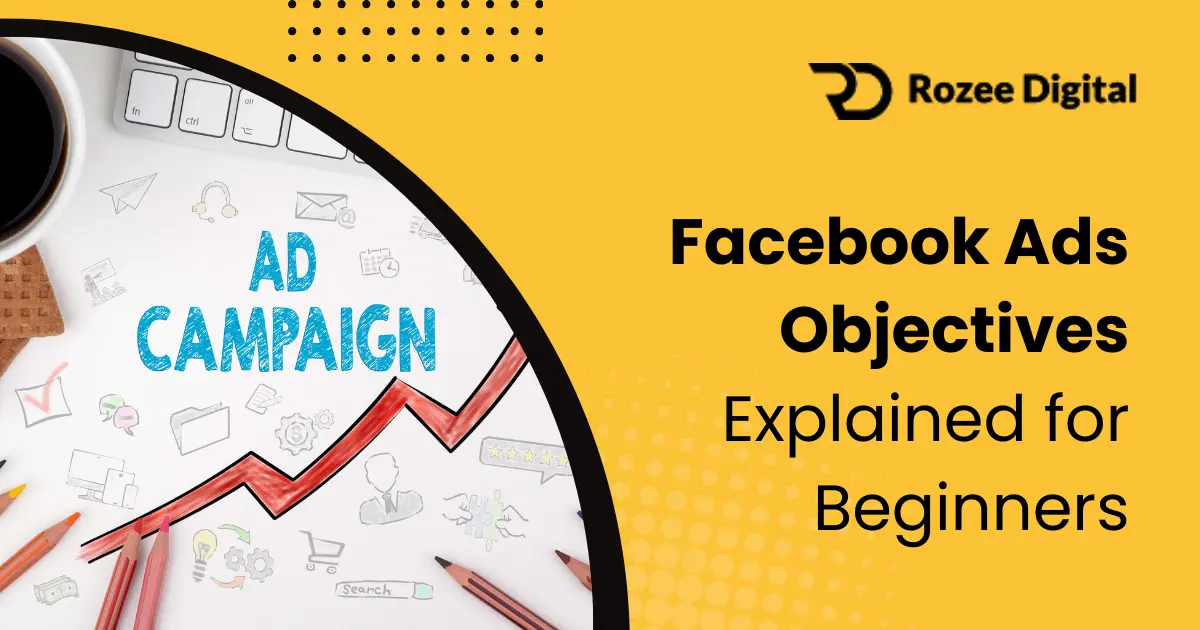
Understanding Conversion Rates
Conversion rates play a vital role in the success of an ecommerce brand. By understanding what conversion rates are and the importance of increasing them, businesses can unlock the secrets to maximizing their conversions and achieving their goals.
What is a Conversion Rate?
A conversion rate refers to the percentage of website visitors who take a desired action or complete a specific goal. This action can vary depending on the objectives of the website, such as making a purchase, filling out a form, subscribing to a newsletter, or downloading a resource. The formula to calculate conversion rate is:
Conversion Rate = (Number of Conversions ÷ Number of Visitors) × 100
For example, if a website receives 1,000 visitors in a month and achieves 50 conversions, the conversion rate would be 5%.
Understanding the conversion rate is crucial for businesses as it provides valuable insights into the effectiveness of their website and marketing efforts. By tracking and analyzing conversion rates, businesses can identify areas for improvement and implement strategies to increase conversions.
Importance of Increasing Conversion Rates
Increasing conversion rates is a fundamental objective for ecommerce brands. A higher conversion rate means more visitors are taking the desired actions, resulting in increased revenue, customer acquisition, and business growth. Here are a few key reasons why increasing conversion rates is important:
- Revenue Generation: A higher conversion rate means more sales and revenue for the business. By optimizing the website to convert a higher percentage of visitors into customers, businesses can significantly increase their bottom line.
- Cost Efficiency: Increasing conversion rates can lead to a more efficient use of marketing budget. By converting a higher percentage of website visitors, businesses can generate more value from their advertising spend and reduce customer acquisition costs.
- Competitive Advantage: In today’s competitive online landscape, businesses need to stand out from the crowd. A higher conversion rate can give businesses a competitive edge by attracting more customers and outperforming competitors in the market.
- Customer Experience: Improving conversion rates often involves optimizing the website design, user experience, and overall customer journey. By creating a seamless and enjoyable experience for visitors, businesses can enhance customer satisfaction, loyalty, and brand reputation.
To increase conversion rates, businesses can employ various strategies and tactics, such as optimizing website design, crafting compelling copy, streamlining the checkout process, leveraging social proof, and implementing A/B testing. By continuously analyzing and improving conversion rates, businesses can unlock the potential for growth and success.
Understanding conversion rates is the first step towards maximizing conversions. To delve deeper into the world of conversion rate optimization, check out our article on conversion rate optimization for valuable insights, strategies, and tips to boost your website’s performance.
Analyzing User Behavior
To increase conversion rates, it’s crucial to understand user behavior and tailor your strategies accordingly. By conducting thorough user research and gaining insights into user intent, you can optimize your website to better meet their needs and improve conversion rates.
Conducting User Research
User research is an essential step in the process of increasing conversion rates. It involves gathering data and insights about your target audience to gain a deeper understanding of their preferences, motivations, and pain points. By conducting user research, you can identify opportunities for improvement and make data-driven decisions to optimize your website.
There are various methods you can employ to conduct user research, such as surveys, interviews, and usability testing. Surveys and interviews allow you to gather direct feedback from your target audience, while usability testing provides valuable insights into how users interact with your website. By combining these methods, you can gain a comprehensive understanding of your users and their behaviors.
Understanding User Intent
Understanding user intent is crucial for optimizing your website to meet the needs and expectations of your audience. User intent refers to the underlying motivation or goal that drives a user to visit your website. By understanding their intent, you can align your website’s content, design, and functionality to provide a seamless user experience and increase the likelihood of conversions.
To uncover user intent, analyze the keywords and search queries that bring users to your website. This can be done through tools like Google Analytics and keyword research. By identifying the keywords and phrases users are using to find your website, you can gain insights into their intentions and tailor your content to match their needs.
Additionally, analyzing user behavior on your website, such as click patterns, time spent on pages, and conversion funnels, can provide valuable insights into user intent. By tracking and analyzing these metrics, you can identify areas where users may be encountering obstacles or experiencing friction, allowing you to make informed optimizations.
By conducting thorough user research and understanding user intent, you can gain valuable insights into your target audience’s behaviors and motivations. Armed with this knowledge, you can optimize your website to provide a seamless user experience that aligns with their needs and increases conversion rates. For more tips and strategies on conversion rate optimization, check out our conversion rate optimization tips article.
Optimizing Website Design
To increase conversion rates, it’s essential to ensure that your website design is optimized for a seamless user experience. By simplifying navigation and improving page load speed, you can enhance user satisfaction and encourage more conversions.
Simplify Navigation and User Flow
A cluttered or confusing website can lead to frustration and high bounce rates. To simplify navigation and improve user flow, consider the following strategies:
- Clear and intuitive menu: Ensure that your website’s menu is easy to locate and understand. Use concise and descriptive labels for each category, guiding users to the relevant sections of your website.
- Logical information architecture: Organize your website content in a logical manner, grouping related pages together. This helps users find the information they need quickly and easily.
- Strategic use of internal links: Incorporate internal links within your content to guide users to relevant pages or related articles. This not only improves navigation but also encourages users to spend more time on your website.
- Search functionality: Implement a search function on your website to allow users to find specific products or information effortlessly. Make sure the search bar is prominently displayed and delivers accurate results.
By simplifying navigation and user flow, you can reduce the friction users encounter when interacting with your website, increasing the likelihood of conversions. For more information on optimizing landing pages for conversion, check out our article on landing page optimization.
Improving Page Load Speed
In today’s fast-paced digital world, users expect websites to load quickly. Slow page load speeds can lead to frustration and abandonment of the website. To improve page load speed and enhance user experience, consider the following techniques:
- Optimize image sizes: Compress and resize images to reduce their file size without compromising visual quality. Large image files can significantly slow down page load times.
- Minimize HTTP requests: Reduce the number of requests your website makes to the server by combining and minifying CSS and JavaScript files. This streamlines the loading process and improves overall performance.
- Utilize browser caching: Leverage browser caching to store certain elements of your website locally on users’ devices. This allows subsequent visits to your website to load faster as the browser retrieves cached resources.
- Choose a reliable hosting provider: Ensure that your website is hosted on a server that can handle your traffic and provide fast response times. A reliable hosting provider can significantly impact page load speed.
Improving page load speed not only enhances user experience but also has a positive impact on search engine optimization. Users are more likely to stay on your website and convert if they are not waiting for pages to load. For more tips on optimizing your website for conversions, explore our article on website conversion optimization.
By optimizing website design, simplifying navigation, and improving page load speed, you can create a user-friendly environment that encourages conversions. Remember to regularly monitor and analyze user behavior to identify any areas for further improvement.
Crafting Compelling Copy
When it comes to increasing conversion rates, crafting compelling copy is an essential component of any successful strategy. The way you communicate with your audience through your website and marketing materials can significantly impact their decision-making process. In this section, we will explore two key aspects of crafting compelling copy: writing clear and persuasive headlines and using benefit-driven language.
Writing Clear and Persuasive Headlines
Headlines play a crucial role in capturing the attention of your audience and enticing them to explore further. A clear and persuasive headline can make a significant difference in whether a visitor stays on your website or bounces away. Here are a few tips to help you create effective headlines:
- Be concise and specific: Use clear and concise language that accurately communicates the value proposition of your product or service. Highlight the most important benefit or unique selling point to grab the reader’s attention.
- Create a sense of urgency: Incorporate words and phrases that create a sense of urgency or exclusivity, encouraging visitors to take action. For example, phrases like “Limited Time Offer” or “Exclusive Discount” can prompt immediate engagement.
- Use numbers and statistics: Including numbers or statistics in your headlines can make them more compelling. Numbers can help quantify the benefits or results that your product or service offers, making them more tangible and convincing.
Remember to align your headlines with the content that follows. Misleading or click-bait headlines can lead to a negative user experience and harm your brand reputation. For more tips on optimizing your landing pages, check out our article on landing page optimization.
Using Benefit-driven Language
When creating copy for your website or marketing materials, it’s important to focus on the benefits that your product or service provides. By highlighting how your offering can solve a problem or improve the lives of your customers, you can effectively persuade them to take action. Here are a few tips for using benefit-driven language:
- Identify your target audience’s pain points: Understand the challenges and pain points that your target audience faces. Use this knowledge to emphasize how your product or service can alleviate their problems or fulfill their needs.
- Highlight unique features and advantages: Showcase the unique features or advantages of your product or service that set you apart from the competition. Clearly communicate how these features can benefit your customers and improve their experience.
- Focus on the outcome: Paint a picture of the positive outcomes or transformations that your customers can expect by using your product or service. Help them envision the positive impact it can have on their lives.
By using benefit-driven language, you can effectively communicate the value of your offering and motivate your audience to take the desired action. For more strategies and techniques on increasing conversion rates, check out our article on conversion rate optimization strategies.
Crafting compelling copy is an ongoing process that requires continuous testing and refinement. By understanding your target audience, addressing their pain points, and effectively communicating the benefits of your offering, you can create copy that resonates with your audience and drives conversions.
Streamlining the Checkout Process
When it comes to increasing conversion rates, streamlining the checkout process is a crucial step in optimizing your website for better results. By reducing friction points and offering multiple payment options, you can create a seamless and convenient experience for your customers, ultimately leading to higher conversion rates.
Reducing Friction Points
Friction points are obstacles or barriers that can hinder the checkout process and discourage users from completing their purchase. By identifying and addressing these friction points, you can significantly improve the conversion rate of your website.
Some common friction points to consider are:
- Complicated forms: Simplify the checkout form by only asking for essential information. Consider implementing autofill features to make it easier for users to enter their details.
- Hidden costs: Be transparent about shipping fees, taxes, and any additional charges. Clearly display the total cost upfront to avoid any surprises during the checkout process.
- Lengthy checkout process: Minimize the number of steps required to complete the purchase. Implement a progress indicator to give users a sense of how much longer the process will take.
- Mandatory account creation: Offer a guest checkout option to allow users to make a purchase without creating an account. If users have a positive experience, they may be more likely to create an account in the future.
By addressing these friction points, you can create a smoother and more user-friendly checkout experience, increasing the chances of a successful conversion.
Offering Multiple Payment Options
Another way to streamline the checkout process is by offering multiple payment options to cater to different customer preferences. By providing a variety of payment methods, you can accommodate users who may not have access to certain payment options or who prefer to use a specific method.
Consider offering popular payment options such as credit cards, debit cards, PayPal, and digital wallets. This ensures that users can choose the method that is most convenient and secure for them, increasing their trust and confidence in your website.
To determine which payment options to offer, consider conducting user research and analyzing your target audience’s preferences. By understanding your customers’ needs and preferences, you can tailor your payment options to maximize convenience and improve the chances of conversion.
In summary, streamlining the checkout process is crucial for increasing conversion rates. By reducing friction points and offering multiple payment options, you can create a seamless and user-friendly experience that encourages users to complete their purchase. To learn more about conversion rate optimization strategies, check out our article on conversion rate optimization strategies.
Leveraging Social Proof

In the world of ecommerce, social proof plays a vital role in influencing consumer behavior and increasing conversion rates. By leveraging social proof, businesses can build trust and credibility, which in turn encourages potential customers to make a purchase. Two effective ways to incorporate social proof into your website are through customer reviews and testimonials and trust seals and certifications.
Customer Reviews and Testimonials
Customer reviews and testimonials are powerful tools for building trust and convincing potential customers to take action. When shoppers see positive feedback from other satisfied customers, it creates a sense of confidence in the product or service being offered.
Customer reviews provide valuable insights into the quality, performance, and overall experience of your products. Encourage customers to leave reviews by sending follow-up emails after a purchase or offering incentives for their feedback. Displaying these reviews prominently on product pages can help potential customers make informed decisions and increase their likelihood of converting.
Testimonials are more in-depth accounts of customers’ experiences with your brand. These can be gathered through surveys or by reaching out to satisfied customers directly. Testimonials can be displayed on your website’s homepage, landing pages, or dedicated testimonial pages to showcase the positive experiences of your customers.
By incorporating customer reviews and testimonials into your website, you can provide social proof that builds trust and confidence in your brand. Don’t forget to link to relevant products or services within the testimonials to guide potential customers further into the conversion funnel. For more information on conversion rate optimization, check out our article on conversion rate optimization tips.
Trust Seals and Certifications
Trust seals and certifications are visual indicators that assure potential customers of the security and reliability of your website. These symbols, often displayed in the footer or checkout pages, can alleviate concerns related to data security and payment protection.
Common trust seals and certifications include SSL certificates, payment provider logos (such as Visa or Mastercard), and industry-specific certifications. These symbols act as a guarantee that sensitive information will be transmitted securely and that the website meets industry standards.
When visitors see trust seals and certifications on your website, they are more likely to trust your brand and proceed with their purchase. This trust can significantly impact your conversion rates. To learn more about optimizing your website for conversions, explore our article on website conversion optimization.
By leveraging social proof through customer reviews, testimonials, and trust seals, you can instill confidence in potential customers and increase your conversion rates. Implement these strategies strategically throughout your website to build trust, credibility, and ultimately, drive more conversions.
Implementing A/B Testing
To effectively increase conversion rates, it is crucial to implement A/B testing as part of your optimization strategy. A/B testing, also known as split testing, allows you to compare two or more versions of a webpage or element to determine which one performs better in terms of conversions. This data-driven approach helps you make informed decisions and optimize your website for maximum conversions.
Identifying Key Variables to Test
When conducting A/B tests, it’s important to identify the key variables that can significantly impact conversion rates. These variables can include elements such as headlines, images, call-to-action buttons, layout, color schemes, and more. By focusing on these variables, you can systematically test different variations to identify which ones resonate best with your target audience.
To determine which variables to test, start by conducting user research and analyzing user behavior. This will provide insights into user preferences and pain points, helping you identify potential areas for improvement. Additionally, consider the user intent when testing variables. Understanding why users are visiting your website and what they hope to achieve can guide you in selecting the right elements to test.
To get started with A/B testing, it is recommended to use a reliable testing platform or software. This will enable you to easily create and track different variations of your web pages, as well as gather accurate data for analysis. A/B testing tools often provide statistical significance calculations, allowing you to determine when a test has reached a sufficient sample size to make valid conclusions.
Analyzing and Implementing Results
Once you have conducted your A/B tests, it’s time to analyze the results and implement the findings to optimize your website for higher conversion rates. When evaluating the test results, focus on the conversion metrics that matter most to your business, such as click-through rates, form completions, or purchases.
Start by comparing the performance of the different variations tested. Look for statistically significant differences in conversion rates and other relevant metrics. Identify the variations that outperformed the others and analyze the specific elements or design choices that contributed to their success.
Based on the insights gained from the A/B tests, make data-driven decisions to implement the changes that resulted in higher conversions. Update your website with the winning variations, whether it’s a new headline, different call-to-action text, or other impactful changes.
Remember that A/B testing is an ongoing process. Continuously monitor the performance of your website and conduct further tests to refine your optimization efforts. By regularly testing and optimizing, you can maximize conversions and continuously improve the effectiveness of your website.
If you’re interested in learning more about conversion rate optimization, check out our articles on landing page optimization, conversion rate optimization agency, and website conversion optimization.





